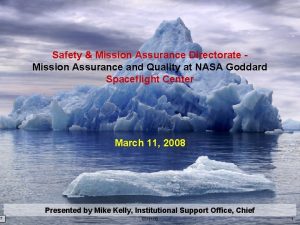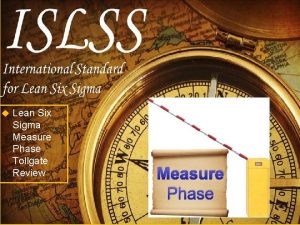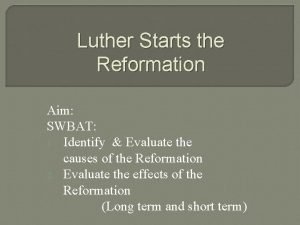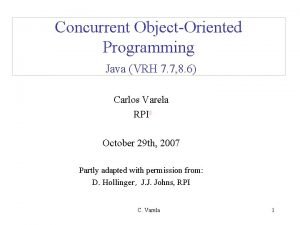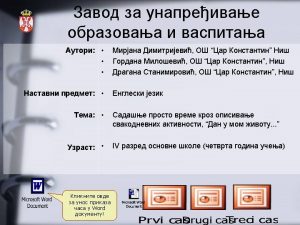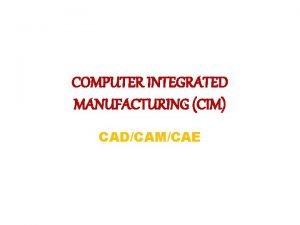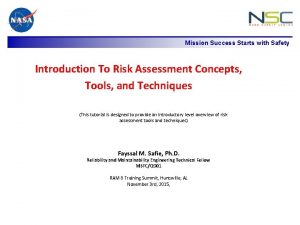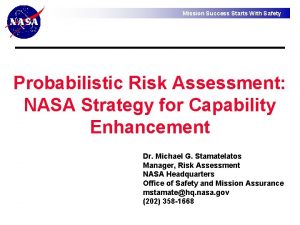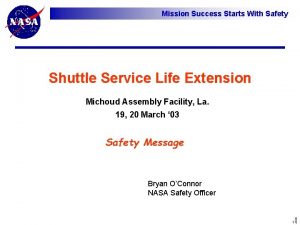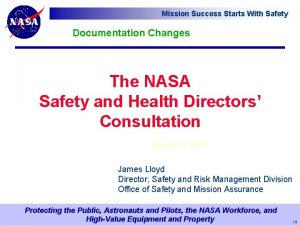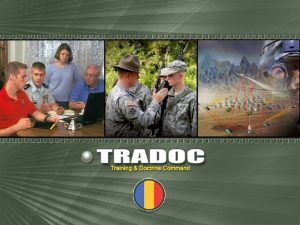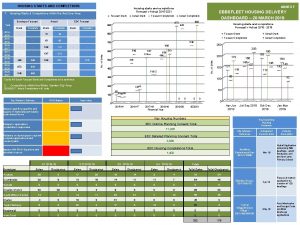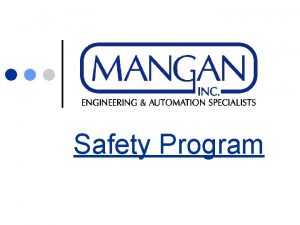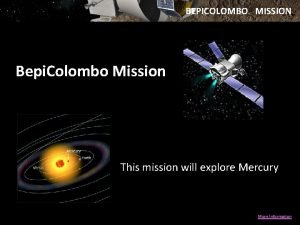Mission Success Starts With Safety JSTD001 x and


















- Slides: 18

Mission Success Starts With Safety J-STD-001 x and x. S Transition Plan Presentation to the NASA Supply Chain Conference Greenbelt, MD November 14, 2007 Jeannette Plante, Manager, NASA Workmanship Standards Project NASA GSFC, Greenbelt, MD 20771 Code 300, Office of Systems Safety and Mission Assurance Phone: 301 -614 -5944; Fax: 301 -614 -5599 Jeannette. F. Plante@nasa. gov ()

NASA Workmanship Standards Project Overview • Current NASA Requirements for Workmanship Standards • Modifying Policies • J-STD-001 Space Addendum Adoption • Obstacles • Past activities to remove obstacles • Current activities • Adoption Timeline 2

NASA Workmanship Standards Project Workmanship Standards Crash Course • Conformal Coating, Bonding, Staking, Encapsulation (. 1) • Hand (. 2) and Automated Soldering (. 3) • Connector Assembly, Cable Harnessing (. 4) • Fiber Optic Connector Assembly (. 5) • ESD Safety (S 20. 20) 3

NASA Workmanship Standards Project NASA Workmanship Standards Requirements: Is there still a need? Most Definitely Yes. Jumper wire attached directly to component terminations. (These components are very sensitive to soldering heat) Nov 2006 Part misaligned on solder pad creating defective solder joints. Marking destroyed. Nov 2006 Bonding material interfering with lead compliancy Nov 2006 Staking as encapsulation? 2001 Non-compliant cable routing and retention. Feb 2007 4

NASA Workmanship Standards Project NASA Workmanship Standards Requirements: Is there still a need? Most Definitely Yes. • 2 wires attached to single pad • Jumper appears to extend beyond termination • No Stress relief This board contained 100+ jumper wires w/o design review. June 2007 (as of Aug 2007, technical support for repair rather than redesign is still being sought) • 2 wires attached to single pad 5

NASA Workmanship Standards Project NASA Workmanship Standards • NPD 8730. 5 Calls out NASA Workmanship Standards for all new builds/contracts as of October 27, 2005 • • • NASA-STD-8739. 1 Polymeric Applications NASA-STD-8739. 2 Hand Soldering NASA-STD-8739. 3 Surface Mount Soldering NASA-STD-8739. 4 Electrical Cable Harnesses NASA-STD-8739. 5 Fiber Optics (installation of connectors) • ANSI/ESD S 20. 20 ESD (replaces NASA-STD-8739. 7) • NPR 8715. 3, Para. 1. 13 requires HQ OSMA approval to vary from this at the Program level and Center Director approval to vary from this at the Project level. Suppliers must show that all of their internal procedures include all of the requirements in the 8739 documents and that their operators and inspector training is traceable to the NASA Training Center Level A Instructors. • 6

NASA Workmanship Standards Project Scope of 8739 Requirements • Use known GOOD materials, geometries and processes “how to” or “lessons learned” • Disallow use of known BAD materials, geometries and processes “how NOT to” or “lessons learned” • Inspection requirements and definition of defects at the Printed Wiring Assembly (PWA) level “manufacturing quality defect reduction at low level of assembly” • Heighten role of customer in decision-making about risks associated with using new processes, rework and repair. “customer participation in risk mitigation” • Requirements for trained and certified operators, inspectors and local instructors. “build in compliance to requirements” 7

NASA Workmanship Standards Project NASA Workmanship Project Objectives: To provide technical advice to NASA HQ OSMA for the development of Workmanship policy. To manage and maintain Workmanship requirements documents. To facilitate leveraging off of industry and military requirements where there is benefit to NASA. Project Lead: Jeannette Plante, GSFC Technical Support: Bob Humphrey, Jose Sancho, Terry James, Felix Frades, Craig Furman, GSFC-HTSI Workmanship Technical Committee: ARC, JPL, DFRC, JSC, MSFC, SSC, KSC, La. RC, GRC Training Centers: GSFC, JPL 8

NASA Workmanship Standards Project New Emphasis on Requirement Review From an October 29, 2007 joint message from Bryan O’Conner, Director OSMA HQ and Mike Ryschkewitsch, Director OCE HQ: “…Some key points to be kept in mind: 1) NASA's primary purpose is to execute missions and deliver the products associated with them. Program or Project managers are charged with leading those implementations. When they identify an institutional requirement, standard or other constraint which is impeding their efficient and effective progress they can and should challenge them. This is not a unilateral decision process i. e. "the program cannot grade their own homework. " But with that said, the clear intent of Mike's written remarks is that institutional requirements, standards, and constraints must provide value to the program and the agency. If they do not, they will be challenged and removed. 2) The line organizations from HQ through the Center Directors and on down are the stewards of NASA’s capability to execute missions. Their responsibility is to help the Programs and Projects be successful in both the short term and the long term. This does not mean that they simply throw out the requirements, standards, lessons learned rules, etc of for the sake of expediency but neither should they try to enforce rules for rules sake. 3) What is required of all parties is a constructive dialogue among respectful partners to find a way forward…. ” 9

NASA Workmanship Standards Project Circular A-119 1995, 1998 MEMORANDUM FOR HEADS OF EXECUTIVE DEPARTMENTS AND AGENCIES SUBJECT: Federal Participation in the Development and Use of Voluntary Consensus Standards and in Conformity Assessment Activities Revised OMB Circular. A-119 establishes policies on Federal use and development of voluntary consensus standards and on conformity assessment activities. Pub. L. 104 -113, the "National Technology Transfer and Advancement Act of 1995, " codified existing policies in A-119, established reporting requirements, and authorized the National Institute of Standards and Technology to coordinate conformity assessment activities of the agencies… • …. Your agency must use voluntary consensus standards, both domestic and international, in its regulatory and procurement activities in lieu of governmentunique standards, unless use of such standards would be inconsistent with applicable law or otherwise impractical. In all cases, your agency has the discretion to decline to use existing voluntary consensus standards if your agency determines that such standards are inconsistent with applicable law or otherwise impractical. • (1) "Use" means incorporation of a standard in whole, in part, or by reference for procurement purposes, and the inclusion of a standard in whole, in part, or by reference in regulation(s). (2) "Impractical" includes circumstances in which such use would fail to serve the agency's program needs; would be infeasible; would be inadequate, ineffectual, inefficient, or inconsistent with agency mission; or would impose more burdens, or would be less useful, than the use of another standard. “Voluntary” = authors participate voluntarily. “Consensus” = all dissenting opinions of voting members must be resolved prior to publication. 10

NASA Workmanship Standards Project IPC Workmanship Standards Most Closely Associated with NASA Workmanship Standards • J-STD-001 DS, Space Applications Electronic Hardware Addendum for J-STD-001 D, Rev. DS dated Nov 2006 [includes base spec Class 3] • Training program for DS being administered through IPC, Beta class run at end of May, coming on line via independent suppliers. J-STD-001, Requirements for Soldered Electrical and Electronic Assemblies, Rev. E in Initial Draft, Rev. D dated 2005, (Base Rev dated 1992) • IPC/WHMA-A-620 AS DRAFT, IPC/WHMA-A-620 A Space Applications Electronic Hardware Addendum, First copy to be available for comment ~ Dec Sept 2007 • Training program not yet developed. IPC/WHMA-A-620 A-CN, Requirements and Acceptance for Cable and Wire Harness Assemblies, Rev. C dated August 2007 11

NASA Workmanship Standards Project Fast Track Directed for J-STD-001 x. S Adoption • Schedule is driven by Cx. P Program requirements effort. • Direction from NASA HQ OSMA was to pursue adoption as a priority over updating 8739 documents. • Requirement Gap Analysis performed (8739 minus J-STD-001 DS) • Training program reviewed during IPC Beta run. • Low participation in process by Space industry. • 90+ requirement gaps found • Risk rating of gaps results were bimodal • Training found to have significant drawbacks. • Workmanship’s and IPC’s industry distribution is <25% representative of NASA stakeholder community 12

NASA Workmanship Standards Project Overcoming Obstacles to J-STD-001 x. S Adoption Close Requirements Gaps – Especially for High Risk Concerns • Coordination meeting held in September at GSFC • All “hi” and “med” rated comments sorted and combined into 51. • J-STD-001 x. S paragraphs modified or added to address key concerns. Some existing J-STD-001 x. S paragraphs go unchanged however interpretation will include NASA requirement. • J-STD-001 x. S WILL NOT BE CONSIDERED A REPLACEMENT FOR 8739. 1 for Polymeric Applications. • 30 comments prepared with reasons for submission to IPC Space Addendum Subcommittee. NASA will request an interim change (implemented by coversheet). • NASA HQ requires notification and coordination with industry to be represented in final submission to IPC. Currently seeking industry reviewers and participants in J-STD-001 DS activity. 13

NASA Workmanship Standards Project Overcoming Obstacles to J-STD-001 x. S Adoption Snapshot of Technical Requirements to be Added to J-STD-001 DS • Stop Work allowed by operator, inspector, manager • Pure tin [also] not allowed for application conditions which support the growth of tin pest. Lot sampling required. • Review and approval prior to use of new materials and technologies • Documented and approved, prior to use, instructions for preventing the presence of energized sharp points in high voltage applications. • Solder shall be Sn 60 A (Sn 60 Pb 40), Pb 36 B(Sn 62 Pb 36 Ag 02), or Sn 63 A (Sn 63 Pb 37) and qualified in accordance with J-STD-006. Lead-free allows (<Pb 03) shall not be used. The use of alternate alloys require prior approval. • Gold shall be removed from soldered surfaces. ENIG plating is exempt. • Wire shall also meet solderability requirements. • Part bodies must have sufficient clearance around solder joints. Please request a review copy • Part marking must be visible • Use of more than two mass reflows must be approved in advance. 14

NASA Workmanship Standards Project Overcoming Obstacles to J-STD-001 x. S Adoption • Training program is developed by J-STD-001 Training Subcommittee • IPC Training Materials: 2 -5 “modules”, Classes 1 -3 in book, hands-on can focus on a particular Class, 4 -hour Space Addendum course (book only), training card “travels” with operator. Training card notes modules taken but not Class trained to. • Local instructors must be traceable to Master Sites (IPC License holder). • NASA suppliers are creating their own versions of training programs outside of this process: Class 3 + Space Addendum + Local Requirements, not Master Site traceable. • Workmanship Project is negotiating a new one-week class “Class 3 + Space” which resembles NASA suppliers’ solution. New subcommittee will be required. Goal is to finish by Nov 08. 15

NASA Workmanship Standards Project Overcoming Obstacles to J-STD-001 x. S Adoption • Workmanship Project must build working relationship with supplier base. • Engineers working in the PWA and Cable Harnessing are encouraged to become a member of the NASA Workmanship Committee via the PBMA site (send an email to jeannette. f. plante@nasa. gov - or – rhumphre@pop 300. gsfc. nasa. gov) x. Lockheed Martin Space Systems Denver XLockheed Martin ? ? Lockheed Martin Palo Alto Northrup Grumman Baltimore XNorthrup Grumman ? ? x. Ball Aerospace Raytheon El Segundo XRaytheon Missile Systems AZ XHamilton Sundstrand ? ? x Hamilton Sundstrand Windsor Locks XHoneywell Aerospace Clearwater XL-3 Communications? ? L-3 Communications Bud Lake XRockwell Collins ? ? Aeroflex Colorado Springs ITT Space Systems Fort Wayne Orbital Sciences Dulles Lucix Camarillo Boeing Huntington Beach Sw. RI San Antonio Los Alamos Labs Los Alamos Pratt & Whittney x. Applied Physics Lab Laurel GD/Spectrum Astro MOOG Assurance Technology Corp Chelmsford Assurance Technology Corp Carlisle ITT Fort Wayne Babcock BAE Systems Cincinnati Electronics Cincinnati DRS Sensor & Targeting Systems Dallas x. Zentek Hayward USA Cocoa Beach Eagle Pitcher x. Aerospace Corporation Chantilly & El Segundo 16

NASA Workmanship Standards Project J-STD-001 x. S Adoption Timeline 17

NASA Workmanship Standards Project J-STD-001 x. S Transition Summary • Current NASA climate is encouraging critical technical review of all requirements. OMB mandates serious look at using industry standards. • All effort being placed on making J-STD-001 Space Addendum a replacement for NASA-STD-8739. 2 and NASA-STD-8739. 3 as soon as possible. (Space Addendum includes Class 3, Does not include 8739. 1 Polymeric Apps). • NASA’s position on requirements is in industry coordination phase. Goal is an Early 2008 document change (without revision change, will stay DS). Request will be for addition or modification of 29 requirements. • Seeking a change from IPC on training offered. Requesting a week-long class for Class 3 + Space Addendum with hands on at Space Addendum level. Goals is midto-late 2008 for course offering. • NASA Workmanship Project will be required to provide high level of participation in IPC process to support the Space Addendum process. Goal for adopting J-STD 001 DS w/change is late 2008. 18
 Nasa workmanship
Nasa workmanship Your child's success or lack of success
Your child's success or lack of success Your child's success or lack of success
Your child's success or lack of success Mission assurance definition
Mission assurance definition Parts of head in sewing machine
Parts of head in sewing machine Tollgate review
Tollgate review Letter starts with o
Letter starts with o Luther starts the reformation
Luther starts the reformation Life of a plant by risa jordan
Life of a plant by risa jordan Linda min
Linda min Kelvin scale starts from
Kelvin scale starts from Primitive vs reference types java
Primitive vs reference types java Romantic age starts from
Romantic age starts from Before class starts
Before class starts Two person seat carry
Two person seat carry Six past half
Six past half Vandelay art. seinfeld the show about nothing. penguin 1997
Vandelay art. seinfeld the show about nothing. penguin 1997 Defination of cad
Defination of cad Pasta life cycle of a butterfly
Pasta life cycle of a butterfly



